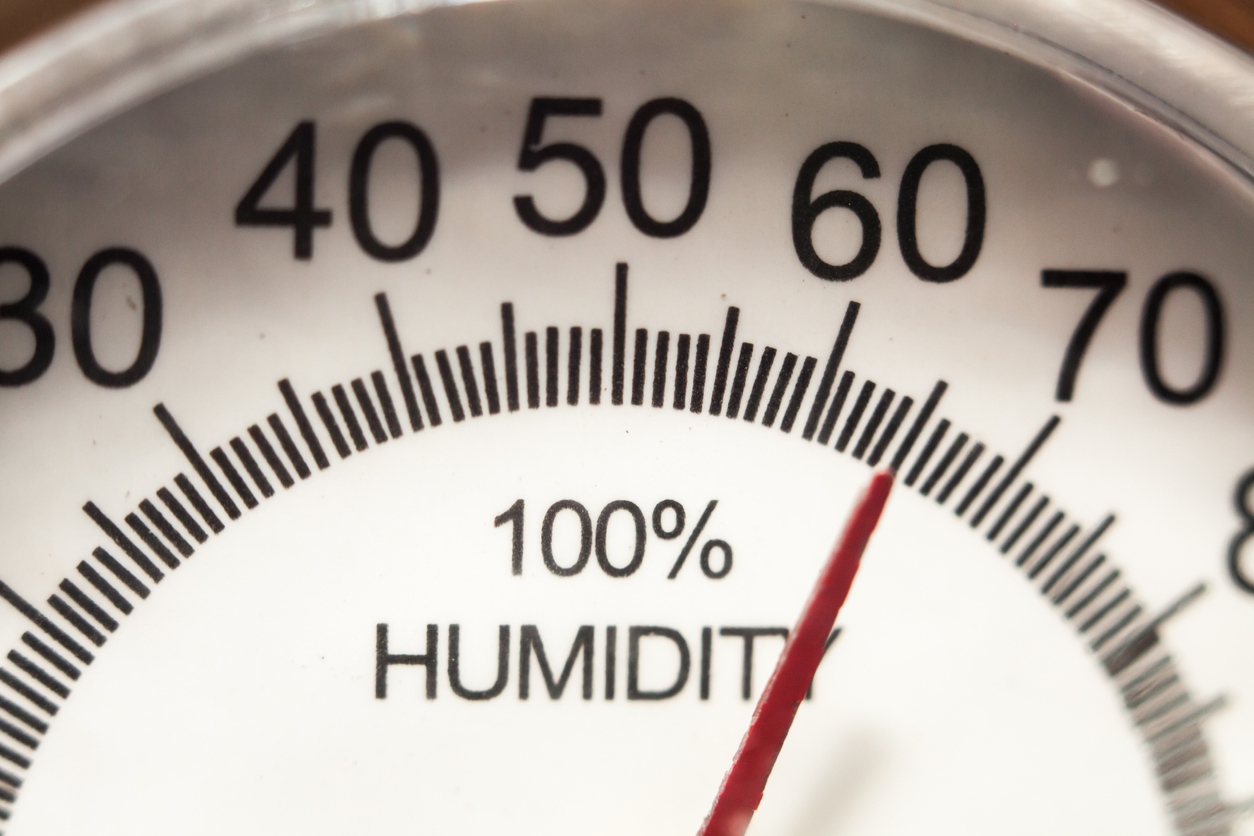
Maintaining your home’s ideal humidity level is vital to ensuring your family’s health and comfort. However, if you’ve never given your home’s humidity levels much thought, you may not be sure where to begin. Fortunately, measuring and adjusting your home’s humidity levels doesn’t have to be complicated.
In this blog, we offer tips on how to achieve optimal humidity levels in your home.
Measuring the Humidity in Your Home
The easiest and most accurate way to measure the humidity levels within your home is with a hygrometer. This small device measures humidity and temperature and is as user-friendly as your average thermometer.
If you don’t have a hygrometer but want a quick read on your home’s humidity levels, you can do so with water and ice. Add a few ice cubes to a glass of water and wait three or four minutes. If the glass is dripping or has excessive condensation, your home’s humidity is likely a little high. However, if the glass is dry, your home’s humidity may be low.
Importance of Maintaining Optimal Humidity in Your Home
Although the ideal humidity level for one home may look different from another due to a family’s personal preferences, a range of indoor humidity levels are generally accepted as safe and comfortable for most homes and climates. Typically, you want your home’s humidity to be between 30% and 40% during the winter and between 50% and 60% in the summer.
Ensuring your humidity stays within these ranges does the following:
- Keeps your home from feeling too warm or too cool
- Protects your wood furniture and fine artwork
- Keeps your skin and hair healthy
- Improves your sleep quality and respiratory health
- Prevents mold and mildew growth
Signs You Have Poor Indoor Humidity
If you’re concerned about your home’s humidity levels, be sure to look out for these signs that you may have either high or low humidity:
- Dry hair or skin: Low humidity can dry out your scalp, hair, and skin, leading to rashes or other uncomfortable conditions.
- Poor respiratory health: Dry air can aggravate airways, while excessive moisture in the air can exacerbate existing respiratory conditions such as asthma or allergies.
- Mold and mildew growth: High moisture levels can lead to increased mold and mildew growth within your home, which can, in turn, impact your health and your home’s structure.
- Poor sleep: High and low humidity levels can be uncomfortable, lead to poor sleep quality, or leave you vulnerable to illness.
Ways To Increase or Decrease Humidity in Your Home
Fortunately, whether you’re facing problems with low or high humidity, there are simple solutions for your home and family:
Humidifiers
If your home has low humidity, a whole-home humidifier can restore optimal moisture levels. This is especially helpful during winter when dry air is a common problem.
Dehumidifiers
If your home has high humidity, a whole-home dehumidifier can help. This is especially necessary in the summer when excessive moisture can lead to mold and mildew growth.
Proper Ventilation
In some cases, proper ventilation is all that’s needed to improve your home’s humidity. Experts like those at Home Comfort can assess your home, identify any air quality issues, and determine which solutions are right for you.
Schedule Air Quality Services With Home Comfort Today
The experienced team at Home Comfort is here to keep your home safe and comfortable all year long. We offer a variety of indoor air quality solutions and top-notch heating and air conditioning services throughout Northwest Chicagoland. Our background-checked technicians always provide upfront pricing and reliable results. We also offer financing options and military, veteran, and senior discounts.
Schedule heating and cooling services by contacting the Home Comfort team today.




